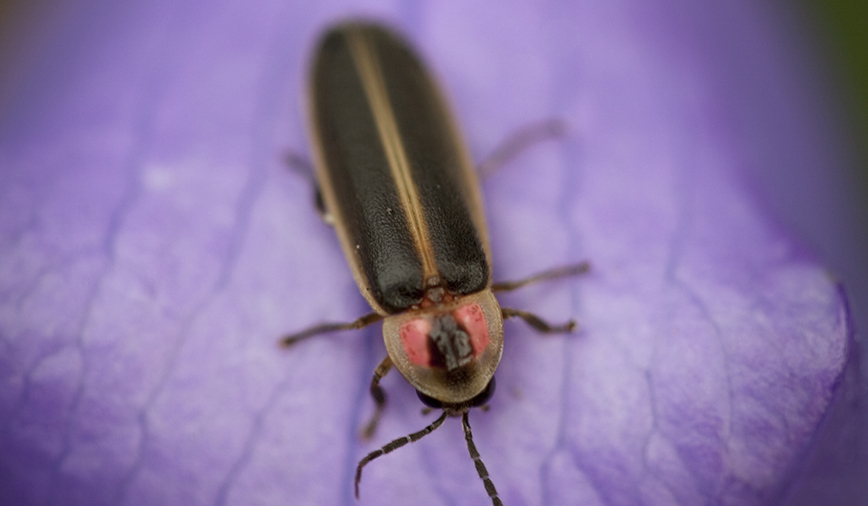Last week we took a Good-Natured look at fireflies, those flashy stars that light up our warm summer nights. We talked about their life cycle, how to tell males from females, and mentioned a few of the more common species that can be found in our area.
But what we didn’t touch upon–in fact, what hardly ever gets talked about–is that our region also has several other types of fireflies that don’t light up at all. They’re not injured; they’re not shy. They simply lack, or have greatly reduced, light-producing organs.
I know. Weird, huh?
Like flightless birds and hairless mammals, lightning bugs without lights are one of nature’s anomalies. But unlike ostriches, kiwis and naked mole rats–all of which have had their moments in the limelight—our local diurnal, or daytime-active, fireflies go about their business in relative obscurity.
It’s a shame, really, because diurnal fireflies are every bit as interesting as their nocturnal counterparts. Their larvae are carnivorous. Adults feed on plant nectar. They communicate, not with light but rather with pheromones, their antennae twitching and contorting as they share chemical messages. They even mate in broad daylight. Yet hardly anyone notices.
I suppose I’m as guilty as anyone when it comes to overlooking these little guys.
Every summer for the past 15 years we’ve hosted programs celebrating fireflies. We’ve talked at length about how important fireflies are to local ecosystems. We’ve shown how their larvae provide needed control of invertebrate pests. Yet we have never, ever held one of these programs during the day.
Despite our lack of attention to their activities, or perhaps because of it, diurnal fireflies appear to be thriving. No one is collecting them in jars, no one is accidentally squishing them. And, to date, no diurnal species has been lured into the flickering flames of an evening campfire. (I’d estimate this happens to nocturnal species at least once every summer during our night camp sessions.)
The other day I took a walk through the Hickory Knolls Natural Area and was positively stunned at the number of diurnal fireflies that were out and about. Conditions were warm, humid and overcast, which may have contributed to the insects’ increased activity levels. While their nocturnal cousins are naturally protected from the sun’s drying rays, diurnal fireflies have to be careful of desiccation. For this reason they tend to hang out in moist environments–woodland edges, at the base of plants, along fallen logs. Most of the ones I saw were, for some reason, on goldenrod leaves.
I won’t even try and pretend to know which species we have in this area. But I did, through some casual on-line research, notice an interesting trend. Even though diurnal fireflies are not known for flamboyant displays of light, their scientific names make it sound like they’re only a few blinks shy of rivalling the Las Vegas Strip:
* Lucidota is from the Latin word lucidus, which means “bright, shining, clear” (Adults may glow briefly after emerging from the pupal stage.)
* Ellychnia is from the Greek word lychnos, which means “lamp”
* Pyropyga is from Greek words that mean “fire butt” (Light organs in this group are diminished, but not entirely absent.)
Lightning bugs—the night-time variety—will be with us throughout the month of July. With sufficient rainfall, they might even last into August. Day-active species, by contrast, can remain active as long as warm temperatures and food supplies permit.
If bright and flashy just isn’t your style, if spark and glitz don’t put a twinkle in your eye, maybe it’s time you gave diurnal fireflies a try.
Pam Otto is the manager of nature programs and interpretive services at the Hickory Knolls Discovery Center, a facility of the St. Charles Park District. She can be reached at 630-513-4346 or potto@stcparks.org.

